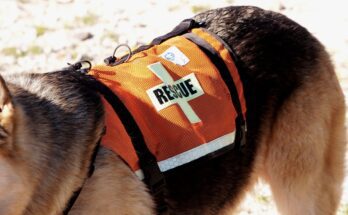As pets age, cancer becomes a significant concern for pet owners. Cancer is among the largest causes of death for pets, but it is not always detected. It’s estimated that almost half of dogs older than 10 die because of cancer, which is often previously undetected. The best methods for detecting cancer in dogs and cats are similar to those used for detection in humans. By detecting cancer early on, the chance of an improved prognosis, or even a cure, increases.
Fine Needle Aspirates
Masses, lumps, and bumps are often of great concern to pet owners. A fine needle aspirate (FNA) can be used to learn what that lump consists of in a non-invasive and affordable manner. This can help to determine whether a mass is benign or requires treatment.
Rectal Exams
While unpleasant, the rectal exam is an important part of physically examining senior pets. This can assist in the process of identifying smaller anal sac tumors that would otherwise not be noted until they had a chance to advance. It is estimated that 40 percent of anal sac tumors are found during exams.
Bloodwork
The annual lab work recommended for senior pets can help to detect many health issues, including cancer. The complete blood count may show information about the general health of the pet, which can then help determine where further investigation may be needed. For example, anemia is reported in cancer between 25 and 30 percent of humans, and while it is not yet determined if this is the case in pets, it is likely similar. Lymphocyte counts can also be determined to identify leukemia or lymphoma.
Along with a complete blood count, the chemistry profile can help further identify health issues. Cancer may be indicated if hypercalcemia or hyperglobulinemia is detected. For example, hypocholesterolemia shows up in 68 percent of cats with multiple myeloma.
Urinalysis
Lab work including a urinalysis allows for further testing for cancer. Transitional cell carcinoma is the most prevalent cancer found in the urogenital system, and this can be tested through urinalysis, months before any clinical signs are detected. By identifying the cancer sooner, it can be treated aggressively and more effectively. As a veterinarian, you want to have the best possible diagnostic capabilities. You can set your veterinary clinic apart with top-of-the-line diagnostic technology.
Radiographs
Finally, among the best methods for detecting cancer in dogs and cats is the radiograph. Taking X-rays can reveal cancer in pets. In dogs, lung tumors are found incidentally on X-rays roughly 30 percent of the time. Because patients without any clinical signs are more likely to present with less advanced disease, identifying cancer through X-ray before symptoms arise can allow for a more successful treatment.
Additional Resources:
Pelicans
Dolphins
Tigers
Jaguars
Moon Bears



